O for a thousand tongues to sing: The Clock Tower’s revival fire blazes on
This National Day, Salt&Light looks at remarkable landmarks in our nation where faith sparked and grew under extraordinary circumstances, impacting the Singapore Church and beyond.
Emilyn Tan // August 5, 2022, 2:45 pm
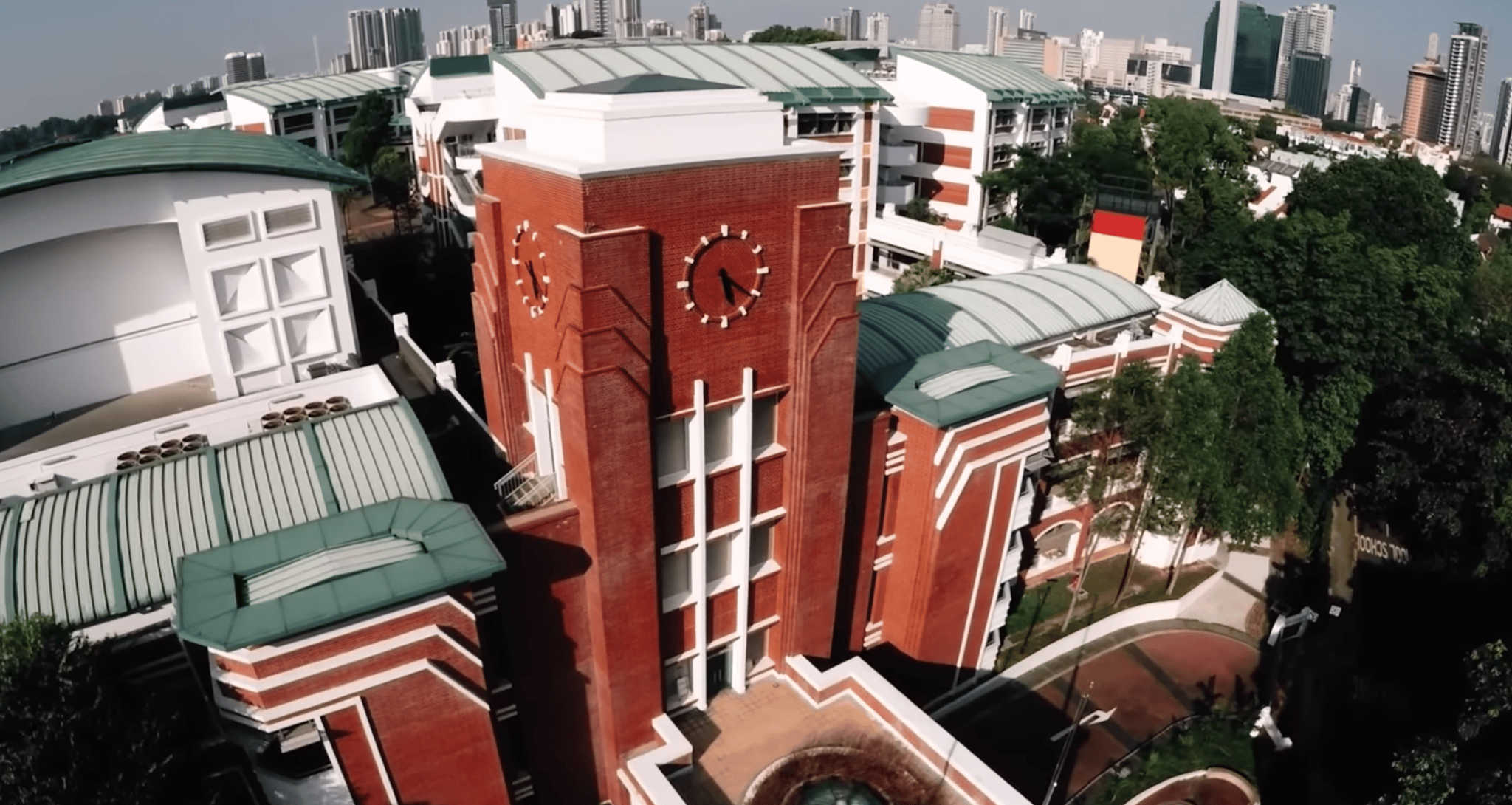
"Do it again, Lord": The ACS Clock Tower stands as a reminder that what happened during the 1972 revival can happen again. All screengrabs from Revival 1972 video by The Thirst Collective.
The red brick clock tower has been a recognisable school landmark along Barker Road for decades.
But in the early 1970s, something more than the drone of classroom lessons and the rowdy laughter of schoolboys was stirring within the school walls.
“If you walked by Barker Road hill in those days you will see groups of ACS boys – five, three, four – just praying outside the sanctuary of the old Barker Road Methodist Church (within ACS Barker),” recalled Rev Malcolm Tan in The Clock Tower Story: The Beginnings of the Charismatic Renewals in Singapore (40th anniversary edition).
“Not only was the church almost full, the Clock Tower was often full as well. Boys were meeting and praying,” said Rev Tan, who was one of many that entered into full-time ministry as a result of that season of revival in Singapore.
An awareness of the Spirit
Mention the Clock Tower revival of 1972, and the immediate association is likely to be with “speaking in tongues”. By all accounts, it was the defining characteristic of that episode, which is largely seen as the beginning of the charismatic renewal of the Church in Singapore.
And yet, to hear the heart of those who were in the midst of it, tongues was just one aspect of a whole new revelation of God for their generation.
Tongues was just one aspect of a whole new revelation of God for their generation.
Yes, the Spirit did descend upon them so arrestingly as in a “baptism”, and they did break out in utterances unfathomable even to themselves.
But, larger than their “day of Pentecost” (Acts 2:4) experience was the evidence of lives so changed as to signal that spiritual transformation had suddenly and purposefully taken hold.
What could it have been other than that God Himself, in the Person of the Holy Spirit, had shown up in our midst, to do a work which nobody would have believed even if told? (Habakkuk 1:5)
One individual here and another there would recount coming into a palpable awareness of His presence and being fully and unconditionally embraced in the Father’s love.
Gently washed in a wave of repentance for their nature of sin, they would emerge with a renewed understanding of the Son’s sacrifice and, in the power of the Spirit stirring within them, share the Gospel of the Kingdom to a neighbour and the guy next to him too.
“There were no strong theologians and pastors to tell us what we could or could not do. We just went ahead and shared the Gospel with our hearts,” revival alumnus Tan Khong Chew would testify in 1999, nearly 30 years later.
“Those of us who were touched went on to experience the Holy Spirit, and the whole thing just went on. It moved from there.”
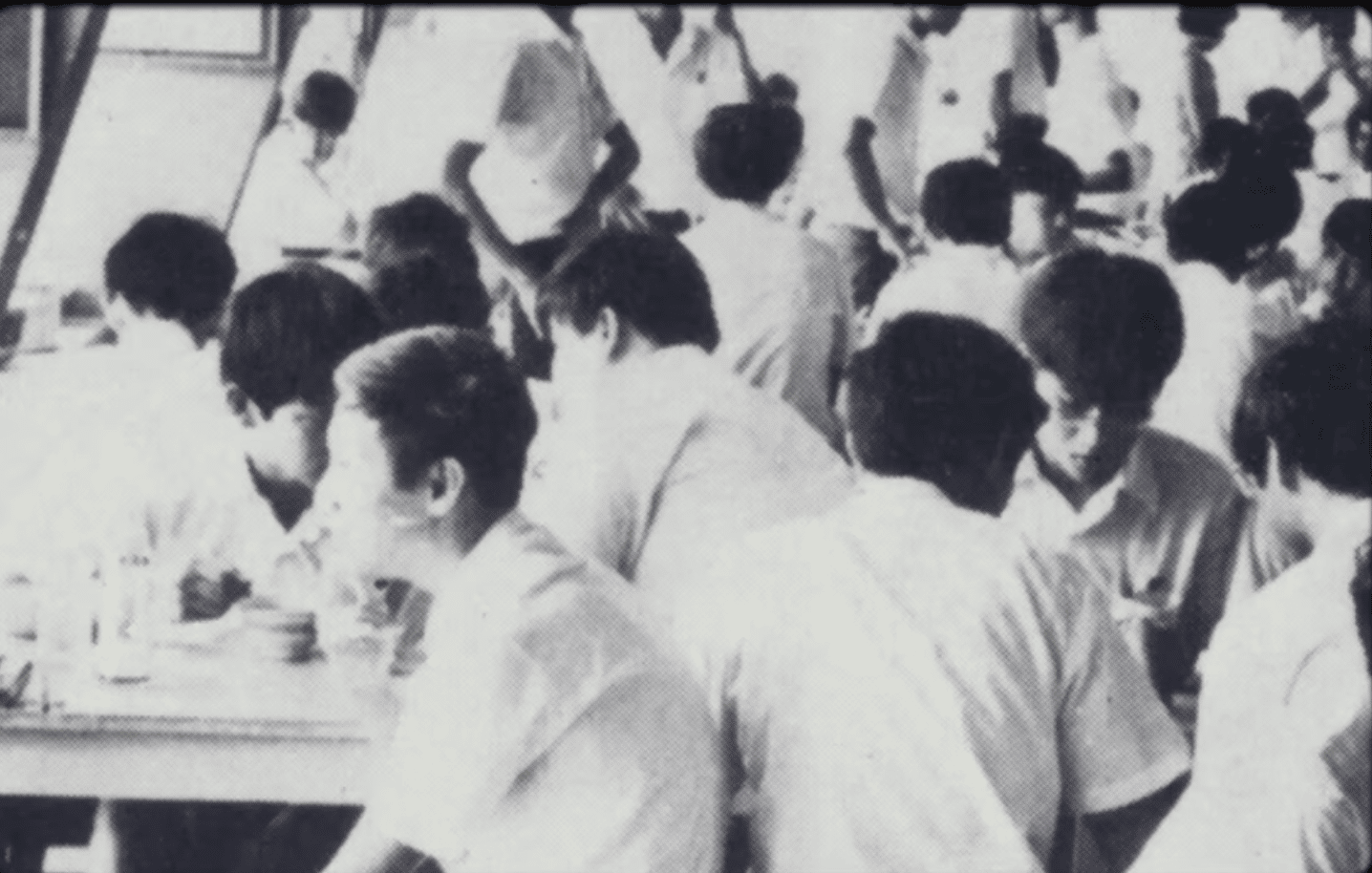
Food for thought: During the 1970s, while some boys were having recess in the ACS canteen, others were praying for their salvation in the Clock Tower. The student revival was ablaze not just at ACS, but at Swiss Cottage Secondary School, Raffles’ Girls School, Outram Secondary and more.
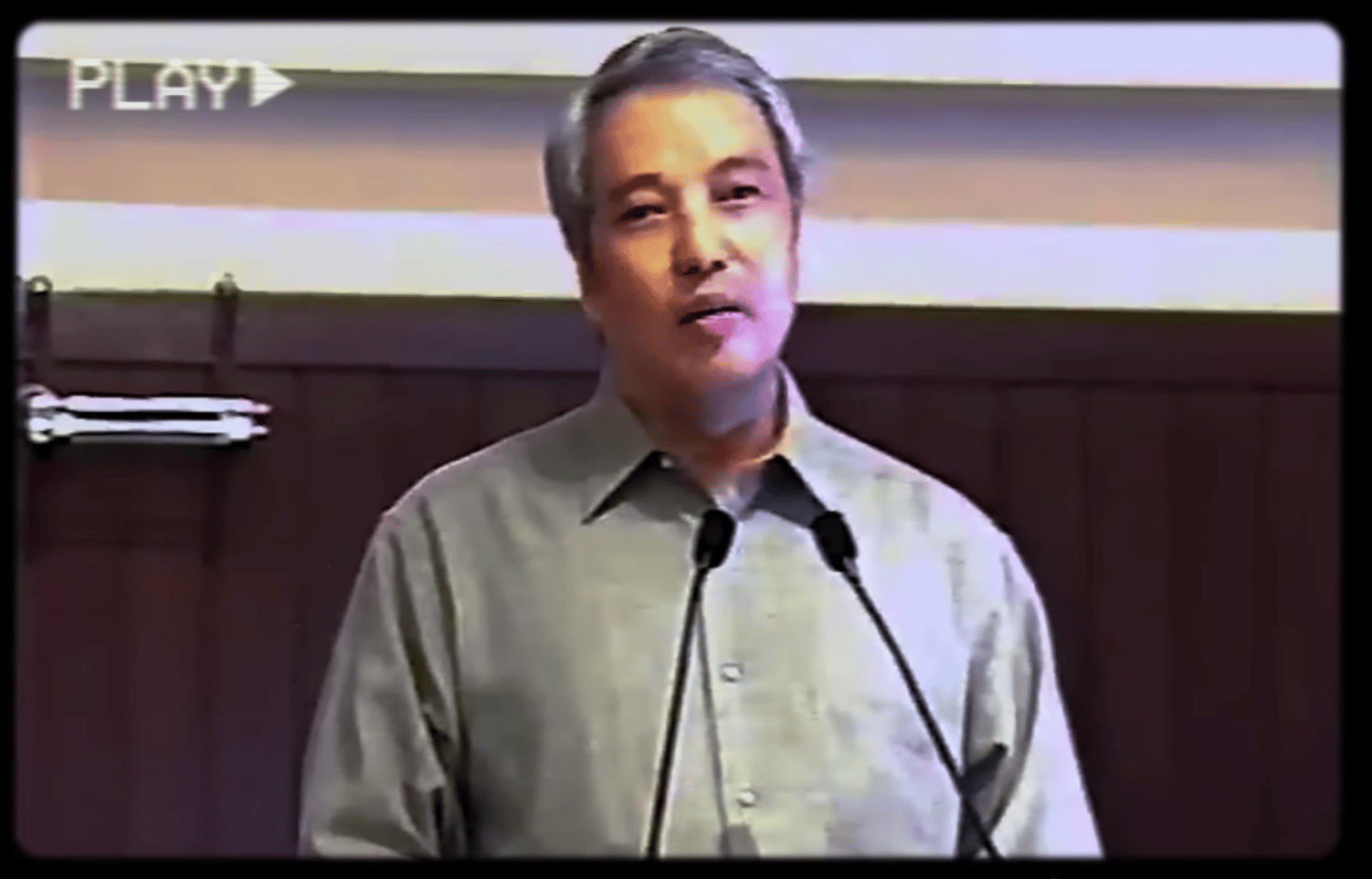
Gripped by salvation’s truth, “we just went ahead and shared the Gospel with our hearts”: Tan Khong Chew.
Sparks flew off on different trajectories, and it wasn’t long before revival was ablaze not just at Anglo-Chinese School (ACS) along Barker Road, but at Swiss Cottage Secondary School down the street on Dunearn Road, further afield at Raffles’ Girls School and Outram Secondary too, as well as at other locations.
“Fire!” – as Ps Yang Tuck Yoong would say – was spreading far and wide, its heat generating hype and controversy.
Misunderstood
The Straits Times picked up on the vibe and, on November 7 that year, reported misleadingly: “Students go into trance at prayer.” Its follow-up article four days later was headlined: “An ‘unhealthy’ cult spreading among youth.”
The students “heard directly from God and received power from the Holy Spirit”.
Hit by then with warnings from the authorities, the post-colonial era Church at large was bewildered.
There already were sweeping changes on the national and ecumenical fronts for her to grapple with. To have to deal with things unknown in her own conservative backyard made it “a difficult and distressing time for clergymen and church leaders of several mainline denominations, especially the Anglicans and Methodists”, observed Georgie Lee and his son, Galven Lee, in their 2015 book, Unfolding His Story: The Story of the Charismatic Movement in Singapore.
The Lees noted the “vast difference in attitude and outlook” between the Church and the students, who “were excited and optimistic about a future where they could live out a God-given spiritual destiny as they heard directly from God and received power from the Holy Spirit”.
Looking back
Decades on, as grown men, the students of the time recalled that theirs was simply a hunger for the Word, a hunger for prayer and an enthusiasm to share the Gospel.
“These were the hallmarks of the movement,” shared Khong Chew during a small group reunion of ACS alumni prior to the 1999 redevelopment of the ACS Barker Road campus, which saw the original Clock Tower being demolished.
Theirs was simply a hunger for the Word, a hunger for prayer, and an enthusiasm to share the Gospel.
Their testimonies were transcribed into The Clock Tower Story: The Beginnings of the Charismatic Renewals in Singapore (40th anniversary edition), edited by Michael Poon and Malcolm Tan. Five stages of progression were identified:
- The preceding prayer movement
- Early stirrings within the ACS St John’s Ambulance cadets’ Christian Fellowship (CF)
- ACS afternoon session CF catching on
- Then ACS Pre-U boys
- Revival spreading beyond ACS
One of the boys’ unceasing prayers was: “Enlarge the size of Your tent and let the curtains of Your habitation be stretched out. Do not hold back, lengthen Your cords and strengthen Your stakes (Isaiah 54:2),” recounted Rev Noel Goh in the book.
Rev Goh was in Pre-U 1 in 1971 when, gripped with a desire to seek the Lord, he and three classmates would head for the Clock Tower almost daily during recess to pray, quickly saying “Amen” when the bell rang and running back to class.
Sometimes they arrived in school early to pray. Often, they stayed back after school and knelt in the church garage until 4 or 5 o’clock in the evening.
“We were motivated by verses like Jeremiah 33:3.” They also read the testimonies of The Cambridge Seven, who became missionaries to China in 1885, and that of Dawson Trotman, founder of the Navigators, who is said to have prayed through the book of Isaiah with the world map.
Signs and wonders
William Caldwell’s story as told in Pentecostal Baptism was another inspiration.
After reading the book in late-1968, Khong Chew was praying for his dad’s recovery from cancer when “suddenly I felt the presence of the Lord come into the room, and the next thing I knew I was slain in the Holy Spirit.
“I did not know what happened, but … by the time I got up off my knees, it was five hours later. I could not imagine I would have prayed for five hours on my own.”
“Suddenly I felt the presence of the Lord come into the room, and the next thing I knew I was slain in the Holy Spirit.”
Things started to change in his life, even as a young Christian. “The hunger for God’s Word was so strong that I could just go through book after book in the Bible. The Holy Spirit created in me this desire.”
At a Morris Cerullo evangelistic rally to which he took his dad, the queue for healing prayer was so long that Cerullo gave an overarching call for hands just to be laid on the sick.
Khong Chew testified: “I laid my hands on my father’s afflicted area.
“He had a cancerous growth on his neck and he could not sleep for many nights. But that night when we prayed I felt the swelling go down and when we went back, my father could sleep, the first night in three months.
“Next day, he gave his life to Christ.”
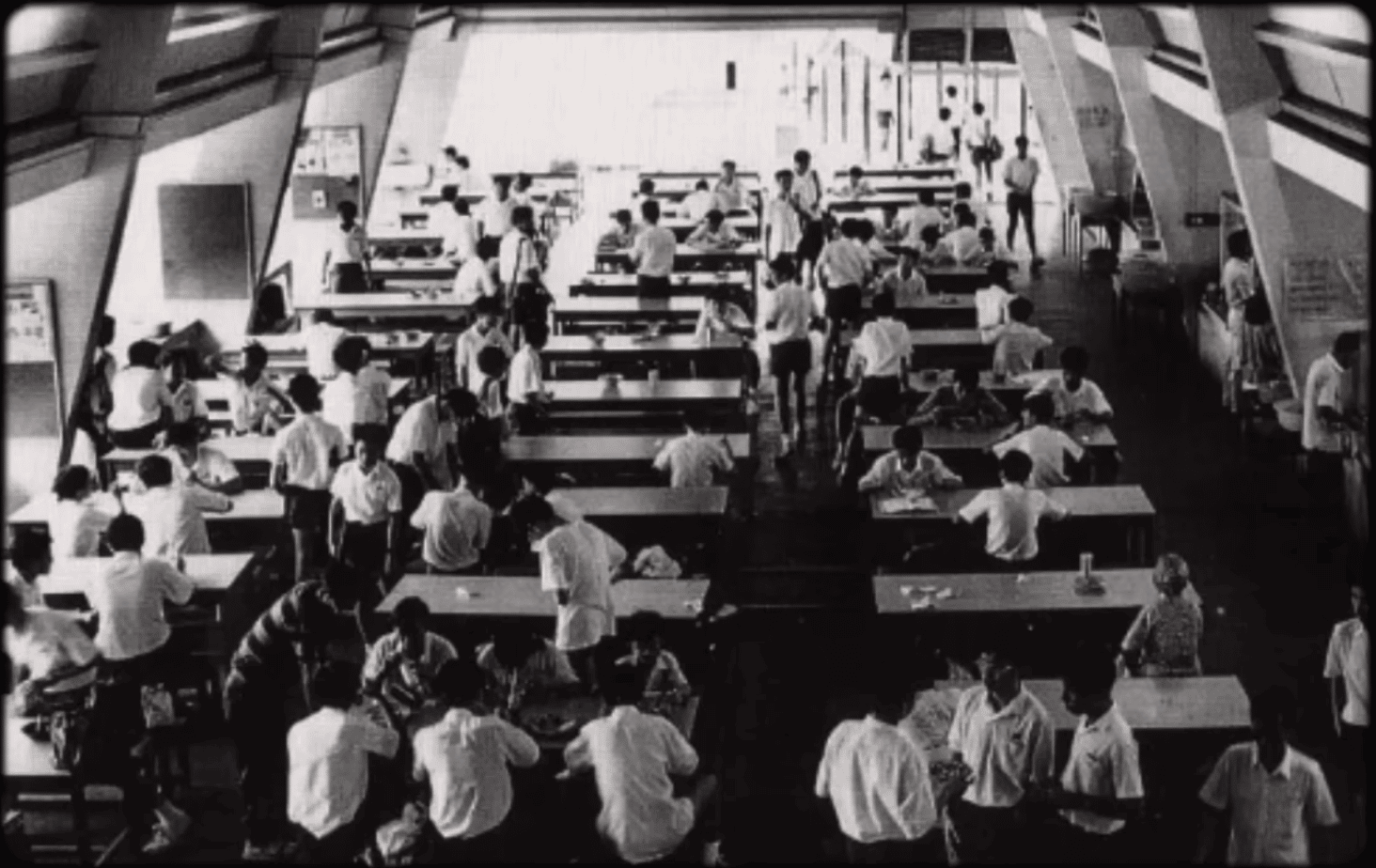
Unseen, unheard, but the wind of the Spirit was surely blowing across the ACS community.
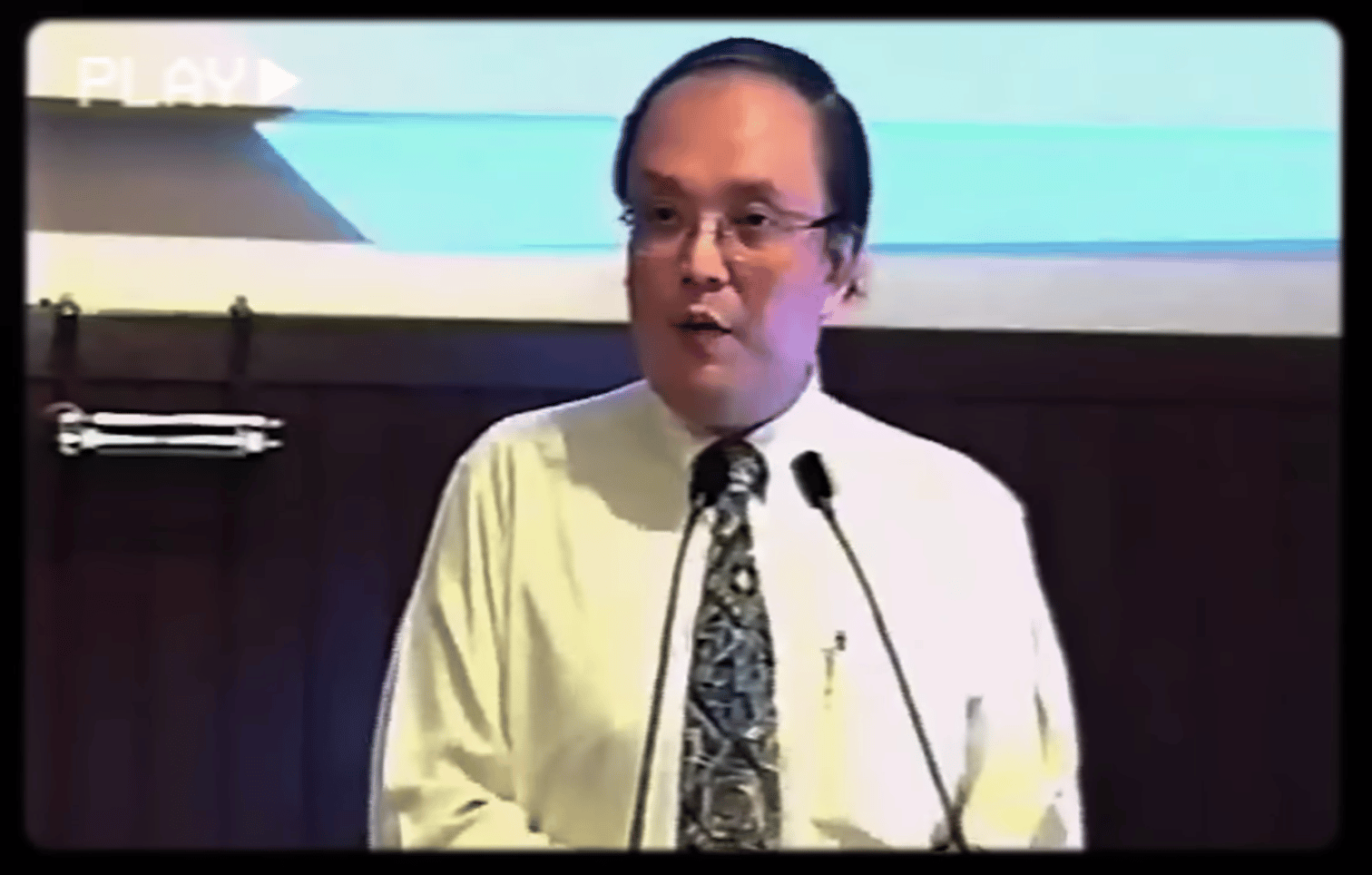
Those were the days: Tan Khian Seng received the baptism of the Holy Spirit in January 1969 when Ps Fred Seaward prayed for him. He was leader of the St John’s Ambulance Christian Fellowship camp at the time.
Khong Chew’s brother, Khian Seng, saw how Kong Chew “just knelt down in simple faith and the Lord just baptised him in the Holy Spirit and he spoke in tongues”. Khian Seng would himself receive the baptism of the Holy Spirit in January 1969, when Ps Fred Seaward prayed for him.
As leader of the St John’s Ambulance CF camp that year, Khian Seng taught captivated boys on the baptism of the Holy Spirit. Ps Seaward and Rev Dr Simon Chan were subsequently invited to instruct the CF on praying in the Spirit and other related topics.
These efforts caused Khian Seng to be expelled from the St John’s Ambulance extra-curricular activity (ECA as it was then called). However, he and his like-minded friends then found the Singapore Evangelistic Centre at 357 Bukit Timah Road, where an Assemblies of God pastor from America, the late Rev Hugh Baker, was divinely placed to disciple them further.
Sweeping change
Rev Baker would remember the season as one marked by the sovereignty of God. Although by then a veteran missionary of 20 years, he too had much to learn.
Speaking at the 1999 reunion, he would recall: “All these young men from ACS were full of questions. I was in constant contact with heaven to find out what I should tell these people.
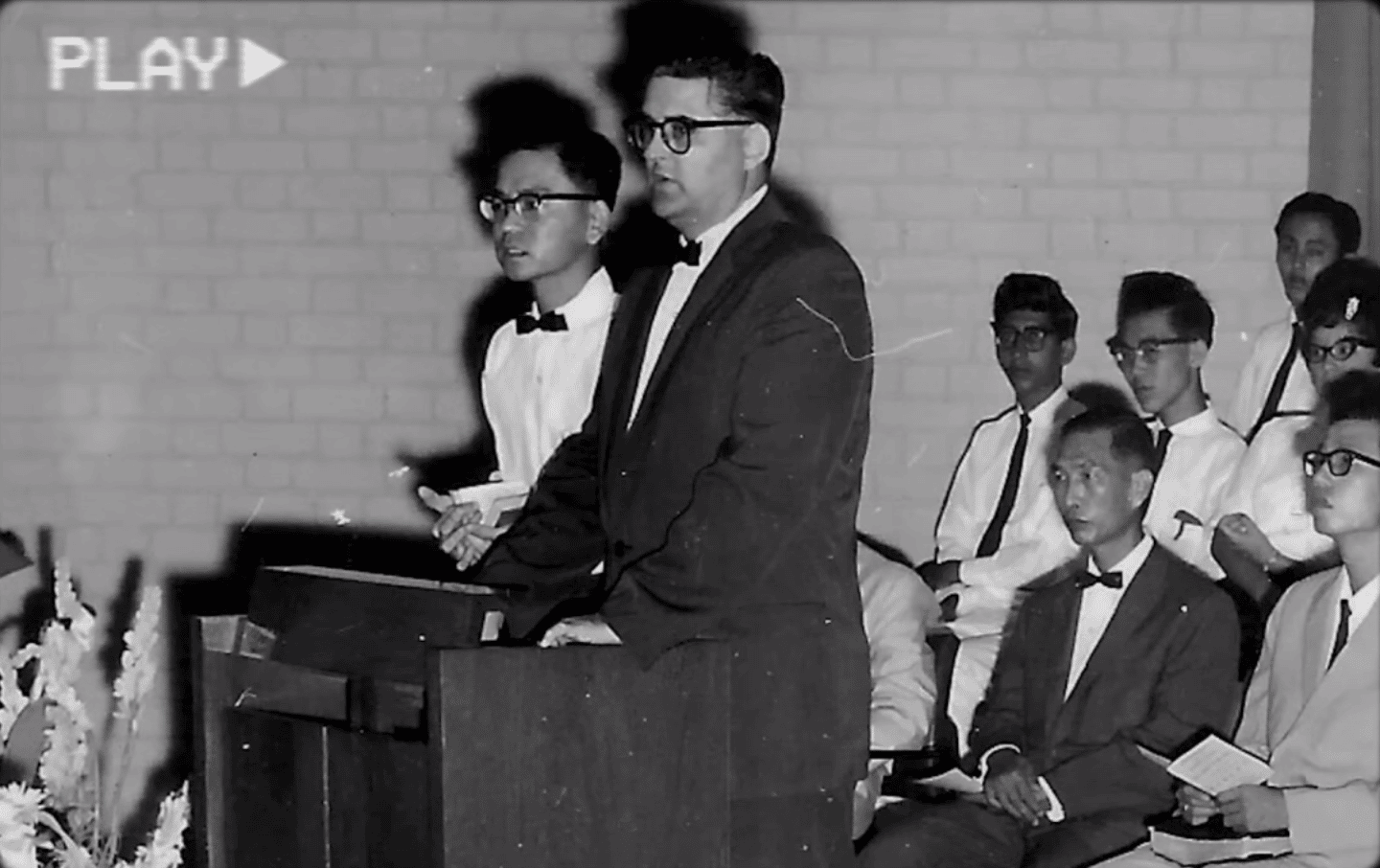
Godsend: Unbeknownst even to himself, Rev Hugh Baker was divinely placed in a house along Bukit Timah Road, readied to be mentor to the ACS boys in the 1970s.
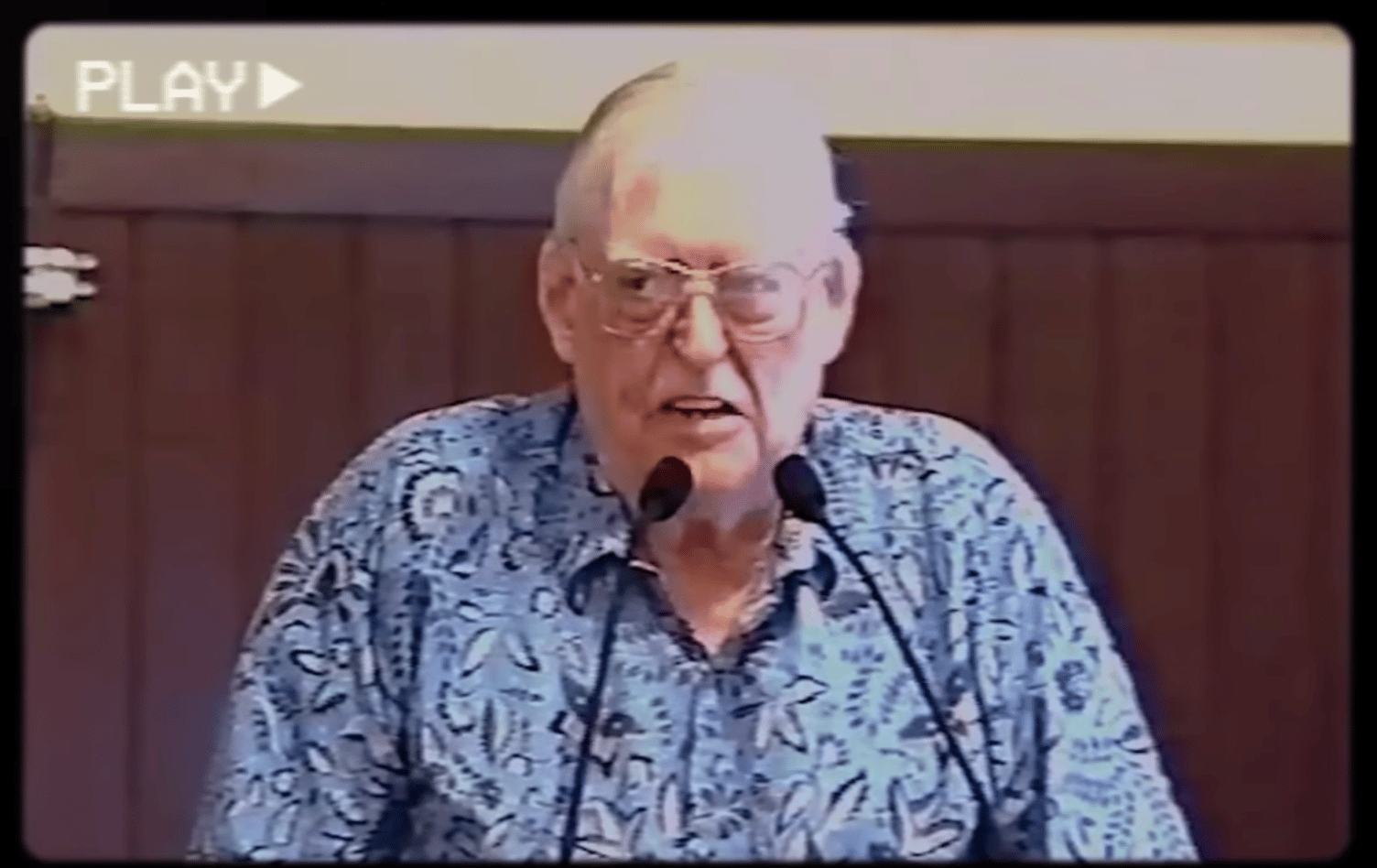
Rev Hugh Baker in 1999: “All these young men from ACS were full of questions. I was in constant contact with heaven to find out what I should tell these people.”
“And then my phone began to ring. ‘Would you be free at 2.30 tomorrow afternoon because I would like to come and receive the baptism of the Holy Spirit?’
“Never in my life had I had anybody ask me if they could come and make an appointment to receive the baptism of the Holy Spirit.
“They came and sat down on chairs, and I laid my hands on them and the Lord filled them with the Holy Spirit. They sat there and spoke in tongues and got up and walked away.
“I would walk off muttering: ‘That’s not the way it’s done … God doesn’t do it that way.’ But He did.”
“Never in my life had I had anybody … make an appointment to receive the baptism of the Holy Spirit.”
More than individual lives were touched. Calling his role a privilege, Rev Baker pointed to the revival as a watershed event for the nation: “I have the benefit of having seen Singapore churches before and after what happened in 1972.
“It has changed the nature of a nation; it has changed the nature of your schools. It has changed the nature of your business; it has changed the nature of your politics.
“It has changed the nature of this whole nation.”
Underscoring Rev Baker’s view, author Galven Lee said in an interview for the Revival 1972 video: “There are many people who were transplanted to transform, who later went on to prominent positions of leadership, in the business and in community.
“And thus, I would say that this formed a very crucial part of our journey as Christians in Singapore.
“At the very moment when Singapore was undergoing nation building and was a new nation, God sent this huge move of the Holy Spirit to help us see that He is sovereign in this nation, and that was such a crucial ingredient – not only to the growth of the Singaporean church, but to the success of Singapore as a nation.”
Back to the future
Looking back to look forward, Rev Raymond Fong, Pastor-in-Charge of Wesley Methodist Church, spoke on his hopes for another defining move of God in the near future.
“That power and passion that was manifested during the 1972 revival is the very same power and passion we can have today.”
Interviewed for the Revival 1972 video, he noted that the past was about “expressions of the gifts of the Spirit, speaking in tongues and prophetic utterances, healing, and so on”.
“But over time, I think what we needed was really the fruit of the Spirit more than the gift. It ain’t just about the signs and wonders, it’s about the transformation of lives for godly, holy living, for right obedience to God’s purposes in our lives.”
Nonetheless, the importance of what happened in 1972 cannot be underestimated. “It gives a picture of what revival can look like,” he said.
“It gives our next generation this sense that that power and passion that was manifested during the 1972 revival is the very same power and passion they can have today.”
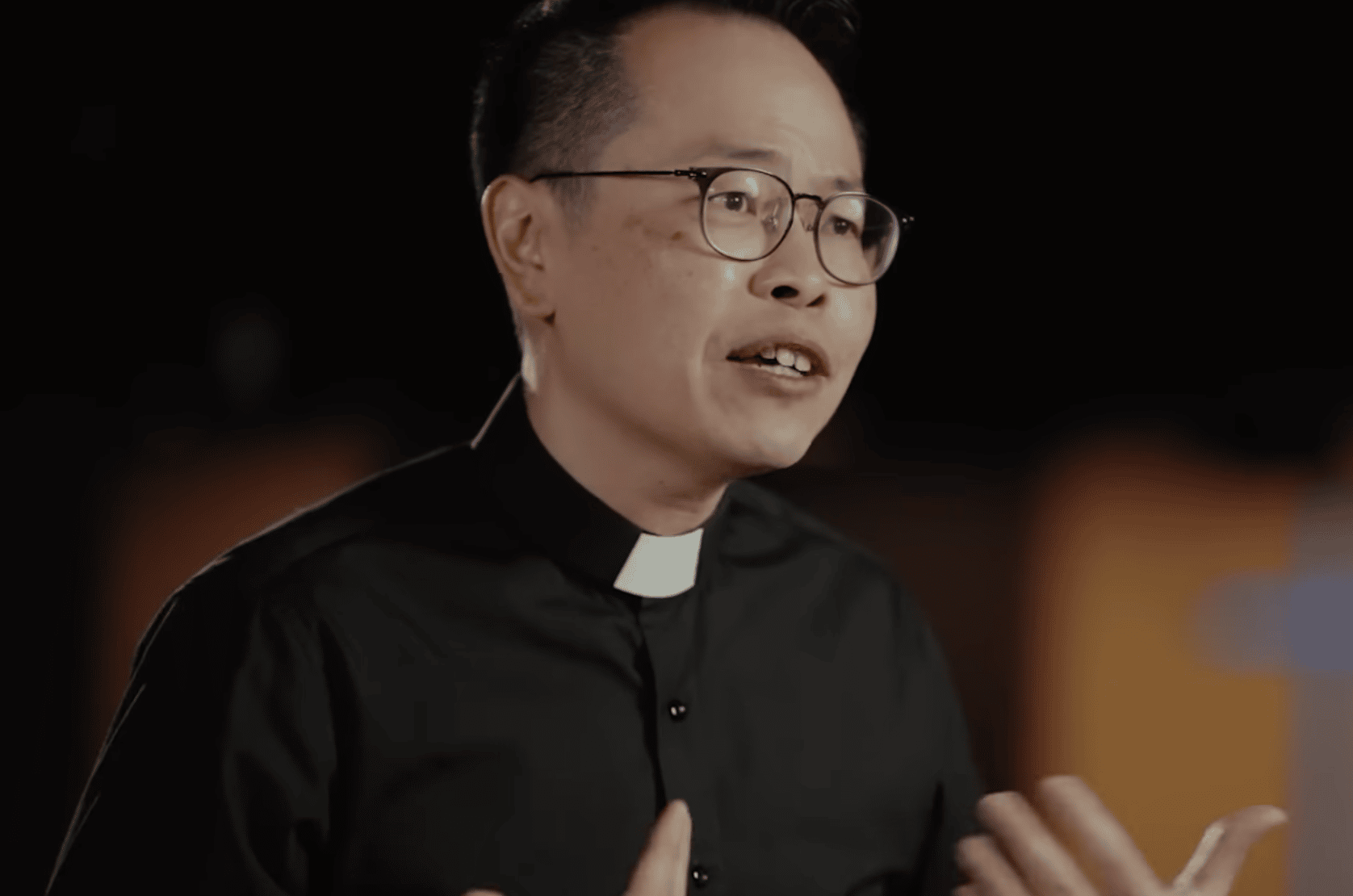
Rev Raymond Fong: “I believe that God will raise this generation for His purposes for such a time as this.”
In view of the world they now are living in, this snapshot represents much-needed encouragement. As they are now, the 1972 cohort was young. Still, “that revival brought about a certain holy courage, and boldness for transformation, to do what is right”.
“That revival brought about a certain holy courage, and boldness for transformation, to do what is right.”
He is convinced: “That same revival can happen to our next generation.
“They can look back to say, ‘God, it happened in the past, don’t bypass us. Give us that fresh burning of our hearts for You. Give us those strange, strangely warm experiences that will cause our hearts to turn to You.”
With regards to the context, he said: “Today, the world is set up to get you to conform. The world is set up to distract. The world has systems and structures to tell you, ‘Don’t be outstanding. Just be where you are.’
“No one dares speak up too much these days, you fear the repercussions.”
And in the wake of the Covid-19 pandemic, “a convenient, costless Christianity” has come about: “Just go online. Don’t even come onsite. I don’t have to change to go for service.
“There is the thought: I just attend online, for example, where everything is just given to me on a plate. And I just take it for granted where I can just blend into the world and not stand up for Christ.
“Revival is more than just the signs and wonders for this generation. A revival would be a revival of being set apart for God.”
“It’s so easy to embrace that kind of Christianity.
“And therefore, a revival is more than just the signs and wonders for this generation. A revival would be a revival of being set apart for God.
“It doesn’t have to be loud. But it can be deep, because I think God is raising the next generation to be placed in different places, and standing up, speaking up – not necessarily in an offensive or loud manner, but in an effective manner with the kind of wisdom, passion and power that the Holy Spirit gives.
“That is the kind of revival I long for, for the next generation,” he said.
“The 1970s gives us a glimpse of how the Spirit can do the work again, in the times to come. I believe that God will raise this generation for His purposes for such a time as this.”
MORE STORIES ON SINGAPORE’S FAITH LANDMARKS:
A Bicentennial look-back at the extraordinary history of the Singapore Church
A Bicentennial look-back at the extraordinary history of the Singapore Church
We are an independent, non-profit organisation that relies on the generosity of our readers, such as yourself, to continue serving the kingdom. Every dollar donated goes directly back into our editorial coverage.
Would you consider partnering with us in our kingdom work by supporting us financially, either as a one-off donation, or a recurring pledge?
Support Salt&Light




